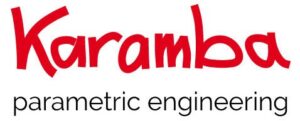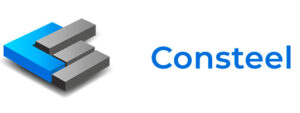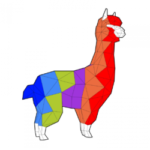Parametric design is becoming more and more common in the construction industry. It gives many possibilities to integrate a new workflow in 3D modelling and BIM software. Here is a link to the previous article about Grasshopper connections to BIM. However, this is not just only one possible application of the parametric approach. in AEC industry. In this post, I will present possibilities of utilising Grasshopper to generate the structural model and perform the analysis and design within different FEM software. Below, you can find the list of varying calculation software that can fully integrat FEM in Grasshopper.
Table of Contents
Before we go to the list of Grasshopper live connectors and plugins, we should answer two crucial questions.
The first one:
1. Why use Rhino and Grasshopper inside other software?
First of all, Grasshopper allows engineers to unlock the full power of parametric design. Tasks that were impossible to perform before now are achievable. Engineers can automate repetitive design tasks, build customized workflows and handle complex geometries. Basically speaking, there is no such expression now as – Sorry, it is not possible to do that becouse of software limitations. Parametric design expends software capabilities significant, and instead of waiting years for the next software update or new release, it is possible to dewelope own feature.
- Start Rhino and Grasshopper as an add-in to other applications.
- Drive the host application with Grasshopper definitions.
- Use the host's APIs in a Grasshopper and Rhino plugin.
- Use Rhino's APIs in the host's plugins.
- Create native objects in the host application with Rhino and Grasshopper.
2. Why use Grasshopper with FEM Software?
First of all, complex structure geometry and object shapes that previously were hopeless to model in analysis software. Now it is possible to model natvie objects in these software and prepare models for future changes.
Second of all, load combinations and design reports can be automated. Designer can finally forget about manually filling raports and change them over and over again.
Third of all, elements in the structure can be automatically generated and updated based on the parameter values. This gives the possibility to engineers iterate effortlessly through different design alternatives. This is a new design process called Value Engineering. Designers can easily test or discover solutions they may otherwise not have had time to consider. This approach provides a better service to the client and the design team.
Moreover, if you combine parametric possibilities additionally with a genetic solver (Galapagos/Octopus), complex optimisations can be automated. Computers can go through thousands of designs and, based on the results, choose the most optimal one that suits our demand. Designers can choose from several optimization targets such as: material usage, cost or choose the most sustainable solution.
We know WHY.
Let’s Answer the next question:
What software can we use?
Below you can find a list of Grasshopper live connections with analysis software
FEM in Grasshopper – The software list
3. List of Grasshopper live connections with calculation software
3.1. Grasshopper with Sofistik
The SOFiSTiK Grasshopper Toolkit gh_sofistik is an extension to Grasshopper providing dedicated components allowing to add properties for structural analysis to Grasshopper geometry and converts this information to SOFiSTiK input files.
Grasshopper gives the possibility to simplify structure creating process and loads definition. Instead of challenging creating geometry by entering line by line in a text editor or by using SOFiPLUS(-X) (Autodesk Autocad based graphical interface), it is possible to create and modify data in real-time.
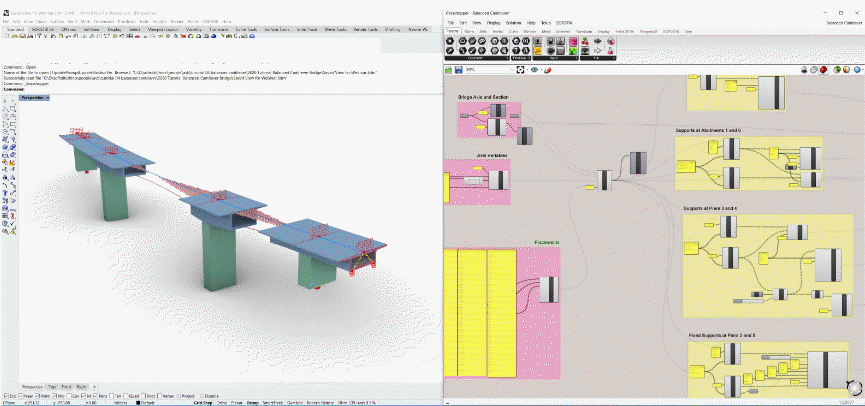
Sofistick plugin to Grasshopper provides four groups of components:
- General
Provides a component to start an analysis calculation directly from Grasshopper, a component to stream text data to *.dat files or a component to adjust visualization settings globally. - Section
Provides components to create & attribute SOFiSTiK sections from planar geometry, inspect the sections, and write this information to SOFiSTiK files. - Structure
Elements like points, curves or surfaces can be converted into structural points, curves and surfaces. In this tab, it is possible to rigid and elastic couplings between these structural elements Next, elements can be attributed with analytical properties like material, cross-section, boundary conditions or loads. Furthermore, it converts the structural information into a SOFiSTiK input which can be directly streamed into a SOFiSTiK project, where further analysis and design of the structure is being performed. - Loads
Provides components to add loads to points, lines and areas. As input, Grasshopper geometry and structural items defined by the components described before can be used. An additional component, called SOFiLOAD, allows converting these loading items into SOFiLOAD input.
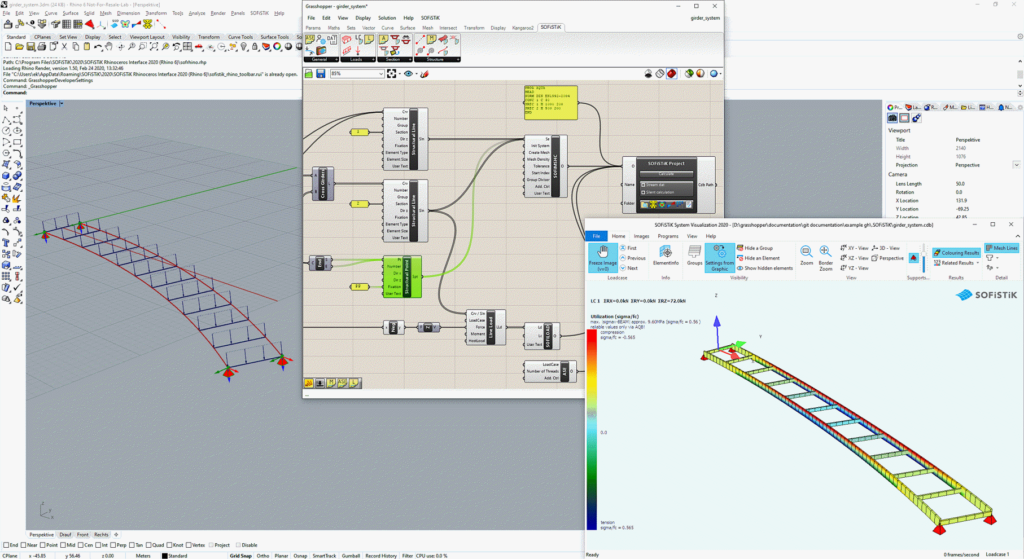
You’ll find the latest free components with instructions and examples on GitHub.
3.2. Grasshopper with FEM-Design
FEM-Design comes with an application programming interface (API) that can be used for parametric design and task automation. The API for FEM-Design is based on the extensible markup language (XML) and allows FEM-Design users to communicate and command FEM-Design. In this way, toolboxes for Grasshopper were created. The connection allows running iterative analyses and creating automated workflows.
This toolbox contains a plenty full of functions to:
- Create FEM-Design objects (bars, shells, covers, loads, supports, reinforcement etc.),
- Append objects to FEM-Design models,
- Run analysis,
- Run design calculations (RC-design, Steel-design, Timber-design),
- Export results,
- Export documentation
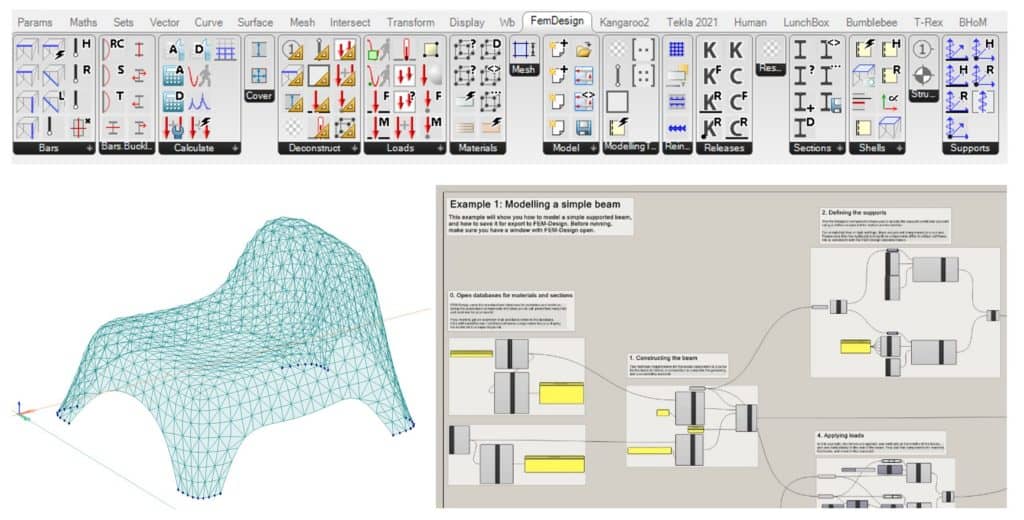
3.3. Grasshopper with SCIA Engineer
Nemetschek SCIA developed a new technology called SOI – Scia Open Interface. The SCIA SOI, is a neutral and independent library that allows developers to create their own plugins independently of Scia Engineer. One of the plugins was called Koala. The plugin provides a live link between Grasshopper and SCIA Engineer for parametric/generative design. This way of working offers an efficient way to design structures with repetitive or challenging shapes.

How does this connection work?
Grasshopper takes the geometry and produces an SCIA Engineer XML with the corresponding data.
Plugin Supports:
- Straight segments, circle arcs with beam rotations and layers
- Flat or curved surfaces with 3 to 4 edges
- Complex plane surfaces, including complex openings
- Hinges
- Node supports, edge supports
- Line loads, freeloads on surfaces
- Mesh size definition
- Batch-mode: ability to run an analysis and get results through “esa_xml.exe”
Link to Tutorial
Note!
Koal is not official SCIA software and is delivered without any warranty, so always verify imported data.
3.4. Grasshopper with Tekla Structural Designer
The Grasshopper-Tekla Structural Designer (GH-TSD) live link enables algorithmic modelling for Tekla Structural Designer (TSD) using Rhino and Grasshopper. The link is a set of Grasshopper components that loads into the Grasshopper user interface and interacts with Tekla Structural Designer. These components can create and update objects live in TSD.

The TSD components convert native Rhino/Grasshopper Geometry objects such as lines & polylines to structural objects such as beams, columns and walls in TSD.
Note!
Make sure you run TSD and open a (new) document before running Rhino/Grasshopper or inserting components. Components will show warnings when TSD cannot be reached.
YouTube Video – LINK
3.5. Grasshopper with Karamba3D
Karamba3D is an interactive, parametric finite element program. Unlike other listed software Karamba3D is a plugin to Grasshopper. It lets you analyze the response of 3-dimensional beam and shell structures under arbitrary loads. Plugin has been developed by Clemens Preisinger in cooperation with Bollinger und Grohmann ZTGmbH in Vienna. Karamba3D is fully embedded in the parametric design environment of Grasshopper.
Karamba3D can be used in the schematic design and design development stages to perform quick, interactive analyses of different design options.
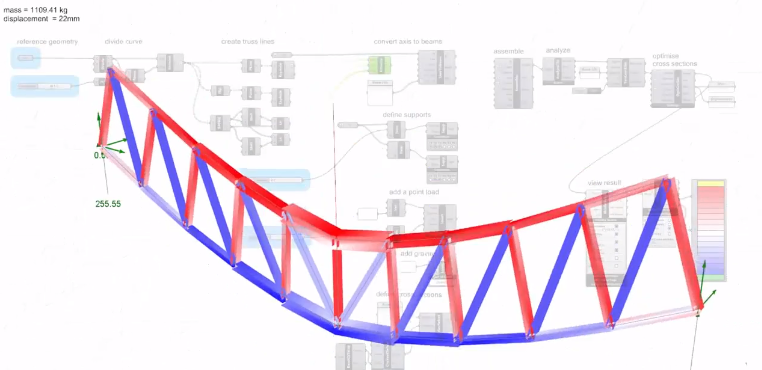
NOTE!
Karamba3D has many features that most FE programs offer. However, it should not work as a replacement for any advanced FE software. Detailed design phases should be calculated in more advanced software.
3.6. Grasshopper with Idea StatiCa
KarambaIDEA is an open-source Grasshopper plug-in that links Karamba3D ( mentioned above) with IDEA StatiCa.
The plug-in KarambaIDEA was developed as part of the research project SMARTconnection and introduced on a webinar in July 2020. More information about the research project can be found Here.
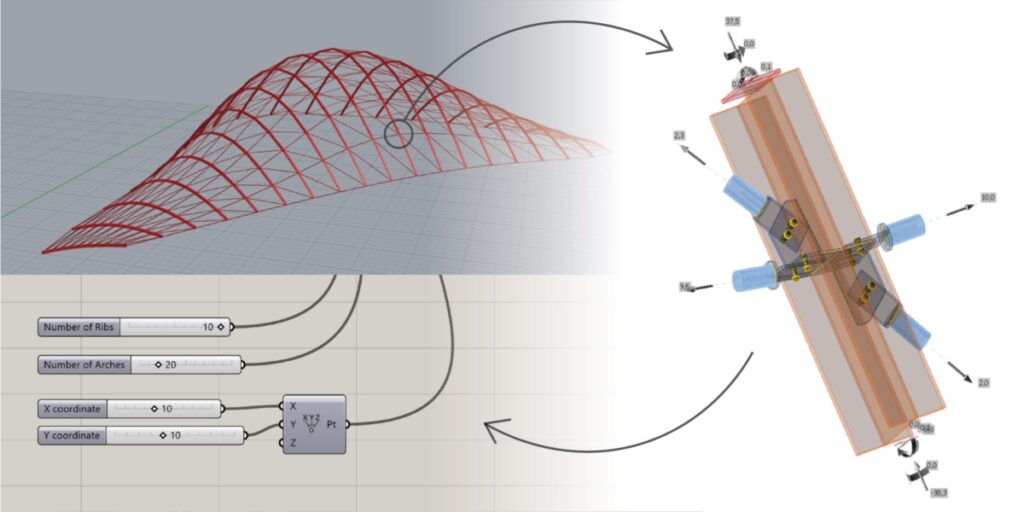
KarambaIDEA facilitates the interaction with IDEA StatiCa, making it possible to include joint analyses in parametric workflow and improve the feasibility and buildability of design. Together with detailed attributes and information about forces, joint geometry can be transferred into IDEA Statica Connection for further analysis on a detailed level. These methods show that analysing steel connections can be done smartly and automatically.
The parametric approach helps perform analyses of steel structures on both global and detail levels and cost optimisation. The ultimate goal is to make cost comparisons between variants produced by the parametric model.
LINK TO DOWNLOAD

FEM in Grasshopper – The software list
3.7. Grasshopper with Dlubal
Another Grasshopper add-on was developed by Diego Apellániz in collaboration with Bollinger+Grohmann. The “Parametric FEM Toolbox” allows for bidirectional data exchange between RFEM and Grasshopper. This will enable you to export complete models, including loading, to RFEM for calculation. The results can be imported into Grasshopper subsequently.
RFEM models can also be imported partially or entirely into Grasshopper. In the following graphic, a member structure from RFEM is imported into Grasshopper and then rendered in Rhino.

The import can also be used for the parametrization of RFEM structures. The components have a Modify function for this. An existing RFEM model can be modified by changing the Grasshopper parameters via a downstream export component.
Main futures:
- Import data from Grasshopper to RFEM: Model Data, Loads, Load Cases, Load Combinations, etc.
- Import Data from RFEM into Grasshopper
- Run structural calculations from Grasshopper.
- Visualize RFEM Models in Rhino
Note!
It’s required to have installed the program Dlubal RFEM with active RFEM and RFCOM licenses in order to use this plugin. Download LINK
3.8. Grasshopper with Oasys
Oasys has recently released Grasshopper plugins for GSA and AdSec. These plugins wrap the .NET API for the software for Grasshopper, essentially running the programs headless within the Rhino/Grasshopper proces, thus bringing the solvers of these software within Grasshopper. It is possible to parametrically create, edit and analyse complete GSA models using Grasshopper, and you can also save or open existing models. The plugins come with post processing components to visualise and extract the analysis results.
The plugins are intended to complement the main software with the capabilities of parametric scripting. There is a bidirectional link between the main software and the Grasshopper plugins – models created using the plugins can be
Some of the highlight features of the plugins aGsaGH allows you to:
- Run GSA headless through the .NET API: – Fast and responsive, utilising the speed of GSA’s solver.
- No ‘interoperability’; you are literrally running GSA inside Rhino’s process.
Units: - All components and parameters are underpinned by units.
- Convert to and from any relevant engineering units.
- Oasys has developed a free and open source plugin called “UnitNumber” which based on UnitsNet and extended with engineering units by Oasys.
Work with existing files: - Not all team members required to know how to use Grasshopper
- Share GSA files (.gwb) created parametrically in Grasshopper with colleagues for checking or further work. – Open existing GSA files (.gwb) inside Grasshopper
Geometry transformations: - GsaGH’s custom parameters works with all build-in Grasshopper components for geometry transformations, like: Move, mirror, morph, array, twist, offset, etc.
Meshing: - Utilise GSA’s powerful meshing capabilities inside Grasshopper; GsaGH uses one of the markets fastest and most robust FE meshing algorithms.
- Create your geometry using Members and let GSA handle intersections and the creation of the analytical model.
Results: - Visualise results within Rhino/Grasshopper to check the design on the fly or use it to automate your engineering workflow
- Combinations: use the powerful post-processing tools in GSA for creating and retrieving Combination Case results.
3.9. Grasshopper with Scan&Solve Pro
The Scan&Solve™ plugin is developed by Intact Solutions for Rhinoceros© to perform linear static (structural) analysis on solid models constructed in or imported into Rhino. Scan&Solve™ is a meshfree finite element analysis method based on a patented technology that is explained in this fairly technical white paper.
The integration with Rhino is complete and seamless: no meshing or preprocessing (meshing, simplification, healing, translating, etc.) is needed. No prior knowledge of analysis or finite elements is required.

Scan&Solve Pro is built on a patented mesh-free technology that liberates Finite Element Analysis (FEA) from the dependence on and limitations of meshing. The salient feature of the technology is separate handling and controls of geometric and physical computational models that are seamlessly combined at solution run time. The advantages of this approach include unprecedented flexibility in handling geometric errors, small features, complex boundary conditions, and interfaces while maintaining most of the benefits of classical finite element analysis.
Note!
Using the Scan and Solve plugin for Rhino, you can perform a stress test of Rhino geometry. The geometry must be solid, so make sure to BooleanUnion all parts into one solid before running the analysis LINK
3.10. Grasshopper with Consteel
Pangolin plugin is used to connect Consteel software together with Grasshopper. Thanks to it, engineers can create complex steel structural model definitions. Models can include details such as beam haunches, highly configurable cold-formed sections with stiffeners, surface loads with load transfer surfaces distributing them onto beams, load combinations made up of loads in load cases, and so on.
The created model can then be saved as a file for later usage or sent directly over to Consteel by the connection component for analysis with Consteel’s unique calculations.
The plugin is runnable without the presence of Consteel, free of charge, including saving export files for later consumption. Consteel is only needed for performing the analysis and design of a model.
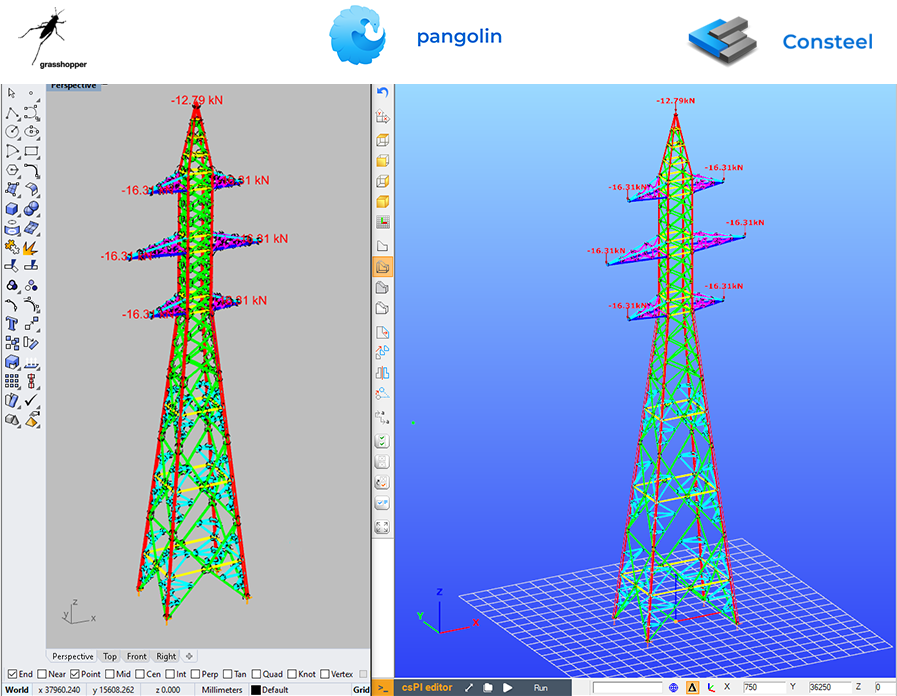
Currently supported objects:
- Geometry: Lines, arcs, polygons
- Structural members: Beams, plates, supports, rigid bodies, diaphragms, link elements, haunches
- Sections: more than 7000 predefined from Consteel section bank, or custom defined by section macros, including cold-formed sections with stiffener definition support
- Custom structural attributes: release stiffness model, support model, material properties
- Loads: Nodal, line, uniform and linearly changing surface loads
- Load configuration: load combinations, load groups, load cases, load transfer surfaces
- Organization: Layers, and structural groups
- I.O. : Load from file, load from Consteel, save to file or Consteel
- Integrated parameters for unambiguous definitions, avoiding the use of nebulous generic parameters
Note!
The exported file is uploadable to steelspace cloud solution for online viewing, sharing, and calculations.
See blog about the basic usage scenarios LINK
FEM in Grasshopper – The software list
3.11. Grasshopper with Autodesk Robot
There are a few ways to connect Grasshopper togethger with Autodesk Robot. One of them is the plugin JumpingFrog|Robot.
JumpingFrog|Robot is a Grasshopper plugin that brings you seamless interaction features between McNeel’s Grasshopper and Autodesk Robot Structural Analysis. You can now import, export and manipulate structural design models from Robot Structural Analysis with Grasshopper.

Create parametric calculation models in a straightforward workflow, creating objects with all their attributes (node supports, bar sections, bar releases, …). Apply any kind of loads and you can build the model in Robot, start calculations and directly retrieve the results in Grasshopper for smart post-processing.
You can also import an entire Robot Structural Analysis model in Grasshopper, so that you can then modify it, export it to other CAD software or even process the geometry in Rhinoceros
Salamander Plug-in Download
3.12. Grasshopper with Etabs and SAP2000
There are several options to connect these software. Below you can find two.
The first one is the Geometry Gym. I mentioned about it it the another list of Grasshopper connections to BIM software. Link to article.
The Geometry Gym structural analysis plug-ins for Rhino and Grasshopper provide an efficient way of modeling, setting load and load combination data performing remote analysis operations, reading results and automating the overall design process of structures.
Reduce model replication with Geometry Gyms Structural analysis detection engine. Transfer BIM models into Structural Analysis models with automatic node snapping, restraint generation and model clean up.

GeometryGym provides Import and Export components to the Karamba3d panel to Import existing structural analysis models (i.e. from Etabs, Robot, SAP2000, GSA etc) to a Karamba3d model and Export from a Karamba3d mode to most of the support structural analysis programs as well as IFC.
The second option is to use a Salamander plugin that has more connecting options including Robot. Data can then be exported to several different FEA packages like , Oasys GSA and ETABS for further analysis.
Salamander (Structural Analysis Link And MANager for Data Entry & Retrieval) hosts structural nodes, elements, sections and so on within Rhino and allows them to be created and modified like any other data type.
3.13. Grasshopper with Alpaca4D
Alpaca4d is a Grasshopper plugin which has been developed on top of OpenSees. It lets you analyse beam, shell and brick elements through Static, Modal and Ground Motion Analysis Alpaca4D is currently developed by Marco Pellegrino and previously helped by Domenico Gaudioso.
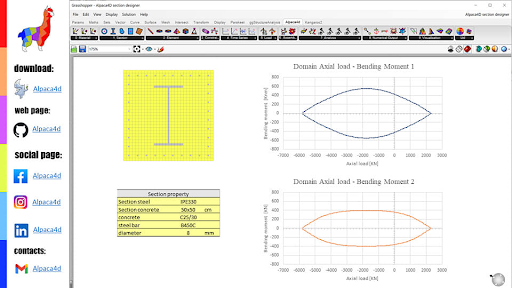
Alpaca4d facilitates the interaction with OpenSees making it possible to model complex geometries within your parametric workflow and reducing the time spent in the modelling. The main idea of Alpaca4d is to provide an efficient and easy way to use OpenSees without writing any line of code. The library is mostly used by researchers and academia because of the not user-friendly interface even if the math at the core library is highly sophisticated. The belief is to bring more users to perform structural analyses with Opensees in a parametric environment such as Grasshopper.
Note:
Alpaca4d is the only Fully OpenSource parametric FEA. The tool is still in the early stage and it will be improved in the future.
3.14. Grasshopper with Kiwi3D
Kiwi!3D enables the integration of Isogeometric Analysis (IGA). The special characteristic of IGA lies in the usage of Non-Uniform Rational B-Splines (NURBS) as basis functions for the Finite Elements. Hence it allows to run simulations directly on NURBS without the need of meshing.

Kiwi!3D includes a isogeometric Shell, Membrane, Beam and Cable element. It is able to handle Trimmed Surfaces as well as Coupled Patches (multi-surface models). You can run Linear as well as geometrically Non-linear Structural Analysis problems. Also it includes Form Finding for tensile structures (Updated Reference Strategy).
For more information, also on the Theory of IGA and also Online Tutorials, see our website: kiwi3d.com
3.15. Grasshopper with AxisVM Model
This add-on is for sending nodes, line elements, surfaces, domains, load panels, supports, loads etc. to an AxisVM Model via COM server connection.
Latest version of the GrasshopperToAxisVM add-on includes 82 AxisVM components. Line elements (beam end release, eccentricity release, eccentricity…), surfaces, domains (variable thickness, variable eccentricity, surface element type, normal, ribbed, composite rib, hollow core, XLAM, trapezoid, custom stiffness matrix), load panels, supports, diaphragms, rigid elements, edge hinges, loads (concentrated load on node, domain, load panel; distributed loads on lines, surfaces, domains, load panels, polyline load on domains and load panels, self-weigth, thermal load). Cross-section: select from library, add from text input, draw thick cross-section. Material: selected from library, add from text input.
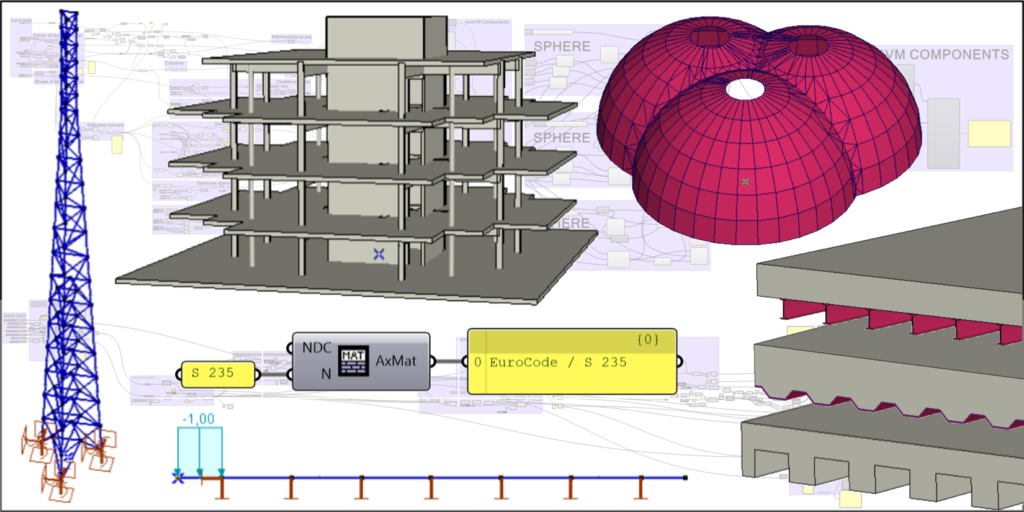
3.16. Grasshopper with FALKO
Falko is a Finite element analysis plugin for Rhino. It is a Rhino and a Grasshopper plugin. You can use both the Rhino UI or Grassshopper components, to create FEA models. Features include linear,non-linear,buckling, earthquake with spectrum response.
Post-Processing integrated in Rhino and advanced tools, like EC3,BS5950,AST and actually working on Indian codes. Alumium and glulam wood in wip. Falko has been developed with grasshopper and parametric modelling in mind, but grasshopper knowledge not needed. You can use Rhino tools to build the model, attributs and loads are assigned to layers.
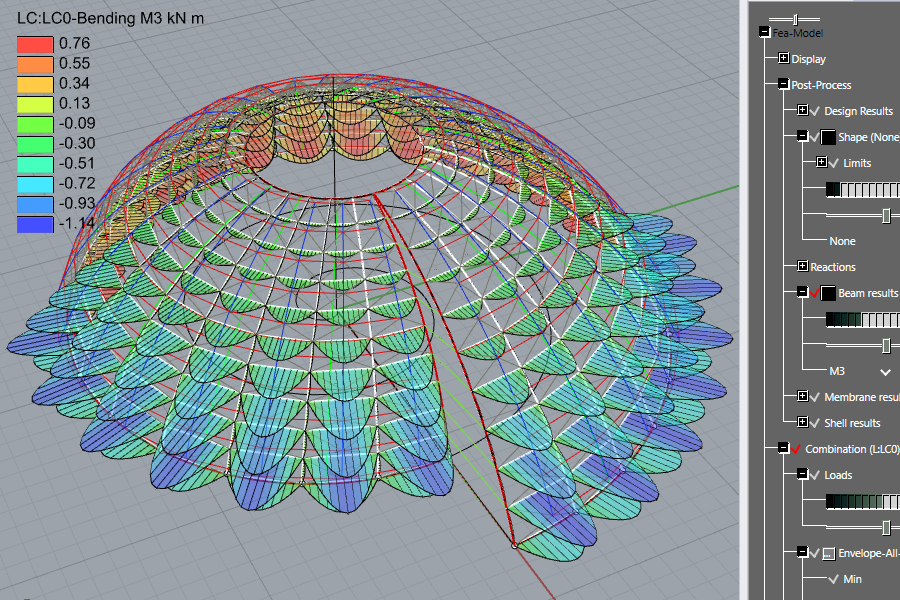
3.17. Grasshopper with CSI Safe
CondorShell is a plugin that allows Structural Engineers to create a complex foundation, and slab models in Grasshopper and transfer the information in real time to a CSI SAFE instance.
CondorShell lets you transfer not only complex geometry created in Rhino 3D or Grasshopper, but it also lets you create a full model in Grasshopper without the back and forth between CSI SAFE and Grasshopper. This opens the door to creating parametric workflows that can be applied to future projects regardless of the geometry.
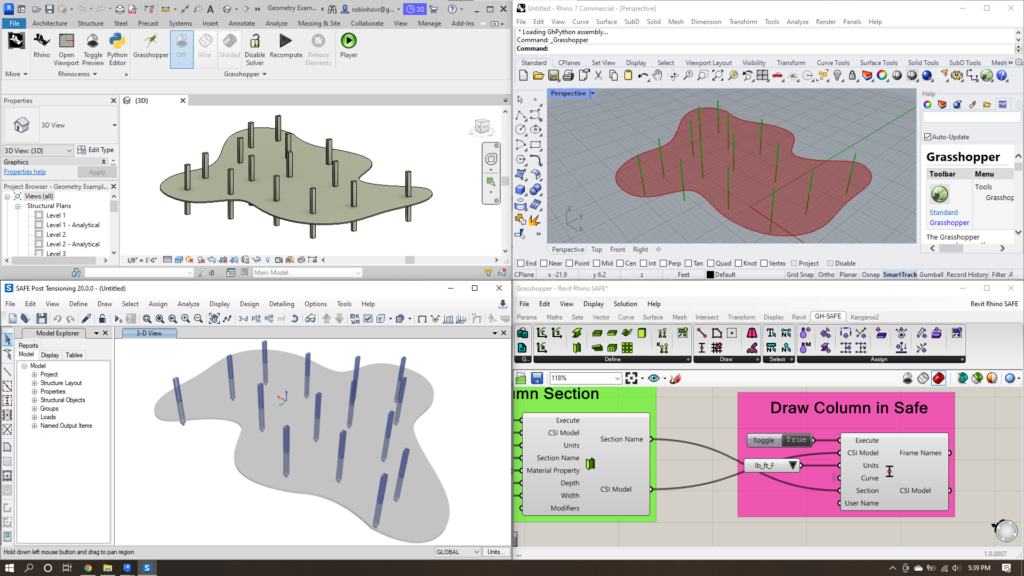
CondorShell comes in two versions: Basic and Pro.
CondorShell Basic: Available using the PackageManager in Rhino 3D, this free version features 20 components that support the creation of your SAFE model.
CondorShell Pro: To unlock additional components and experience the full capabilities of CondorShell, users can upgrade to the paid version which provides 54 components that facilitate the creation of complex geometries in your SAFE model.
Both versions help establish more efficient workflows, saving valuable time during design.
You can find more info on the website and on Food4Rhino
3.18. Fenix in Grasshopper
Fenix is a user-friendly elastic finite element analysis and structural design plug-in for Grasshopper. Its advanced algorithms and seamless integration allow engineers to efficiently simulate and optimize complex projects. With an extensive library of material properties and online collaboration platform.
Fenix Structural Analysis Features
- Finite Element Analysis using Frames, Shells, Membranes, Solids, Springs, and Links
- Element loading using point, frame, shell, solid and lateral assignments with patterns and combinations
- Comprehensive Analysis including static force, thermal, imposed displacement, eigenvalue and response spectrum
- Design code checks using IBC 2018, detailing checks, fiber section, and calculation report printing
- View all results in Rhino and Grasshopper!
Watch this video to see more – LINK
To download the software, click HERE
3.19. Intact in Grasshopper
Introducing Intact.Simulation – mechanical simulation software integrated with Grasshopper and Rhino. With the groundbreaking Immersed Method of Moments™️ technology, it automates complex modeling, delivering fault-tolerant finite element models for superior accuracy and efficiency. Elevate your engineering analyses and design with proven solvers, demonstrating product performance and enhancing credibility in your work. Experience the most flexible mechanical simulation solution for excellence in design.
Features:
- Robust structural, modal, and thermal physics.
- Ideal for complex assemblies like weldments, additive lattices, and mixed topology models.
- Includes fast solving for concept design and precise solving for validation.
- Compatible with industry-standard visualization and validation tools.
For more check out the website LINK
3.20. Grasshopper with ParaStaad
ParaStaad is a Grasshopper plug-in for professional structural analysis & interoperability linking Rhino/Grasshopper with StaadPro.
Before using ParaStaad you must install rhino grasshopper and StaadPro. ParaStaad contains many components to link with staadpro, you can use it do complex structural analysis just build with rhino model.With the editor components you almost can do everything you can in the staadpro just with draging components.
In a word, Parastaad make it very easy to build strucural model in the staadpro.
Architects don’t know how to use the professional structural software? Engineers don’t know how to handle the complicated 3d model? ParaStaad is designed for link parametric design and engineering, link architects and engineers as well.
Professional structural analysis for nonlinear, free-formed structure is no big deal for ParaSTAAD.
Even simultaneously analysis for variety of forms and analysis space frame (or truss) with detailed connections.
3.21. Grasshopper V2 for SkyCiv

The Grasshopper V2 plugin for SkyCiv represents a major upgrade in generative structural analysis workflows, offering a sleeker interface and streamlined design in response to extensive user feedback. Unlike the original version, which required repetitive clicks for each input, V2 introduces components that accept bulk inputs—such as lists of curves, Breps, and even surfaces—drastically improving efficiency and minimizing mouse interactions.
Once installed, the plugin adds a SkyCiv tab to Grasshopper, letting users define geometry (nodes, members, plates), assign materials and sections, and apply loads—all via native components.
The “Assemble Model” compiles these inputs and, with “ModelWriter,” sends the model to SkyCiv Structural 3D in real-time. Users see live mesh and solver updates as the definition evolves.
V2 also includes analysis tools: configure credentials with “SkyCivSettings,” run checks via “SkyCivAnalysis” (starting with Linear Static), and view results in Grasshopper tables. Excel export is coming soon.
This plugin connects parametric design with FEM analysis, enabling fast, automated workflows for engineers, architects, and computational designers.
Note: Uninstall older versions before upgrading.
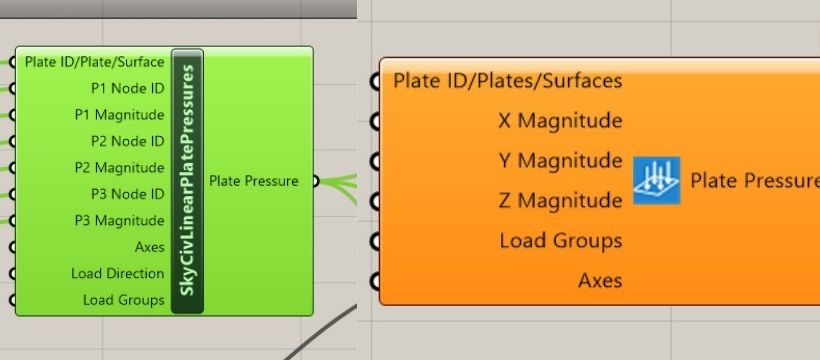
More info: HERE
3.22. Grasshopper with LUCAS
A powerful new tool is now available for parametric structural modeling! The official LUSAS plugin for Grasshopper is free to use and compatible with Rhino 8.08+ and LUSAS 21.1+.
With this plugin, you can:
- Build structural models in Grasshopper using components for materials, sections, loads, supports, and more.
- Preview your model live in Rhino and make real-time parametric changes.
- Connect directly to LUSAS or export the model to share with LUSAS users.
You’ll find the plugin on food4Rhino or through the Rhino package manager. A great step toward integrating FEM with parametric design workflows!
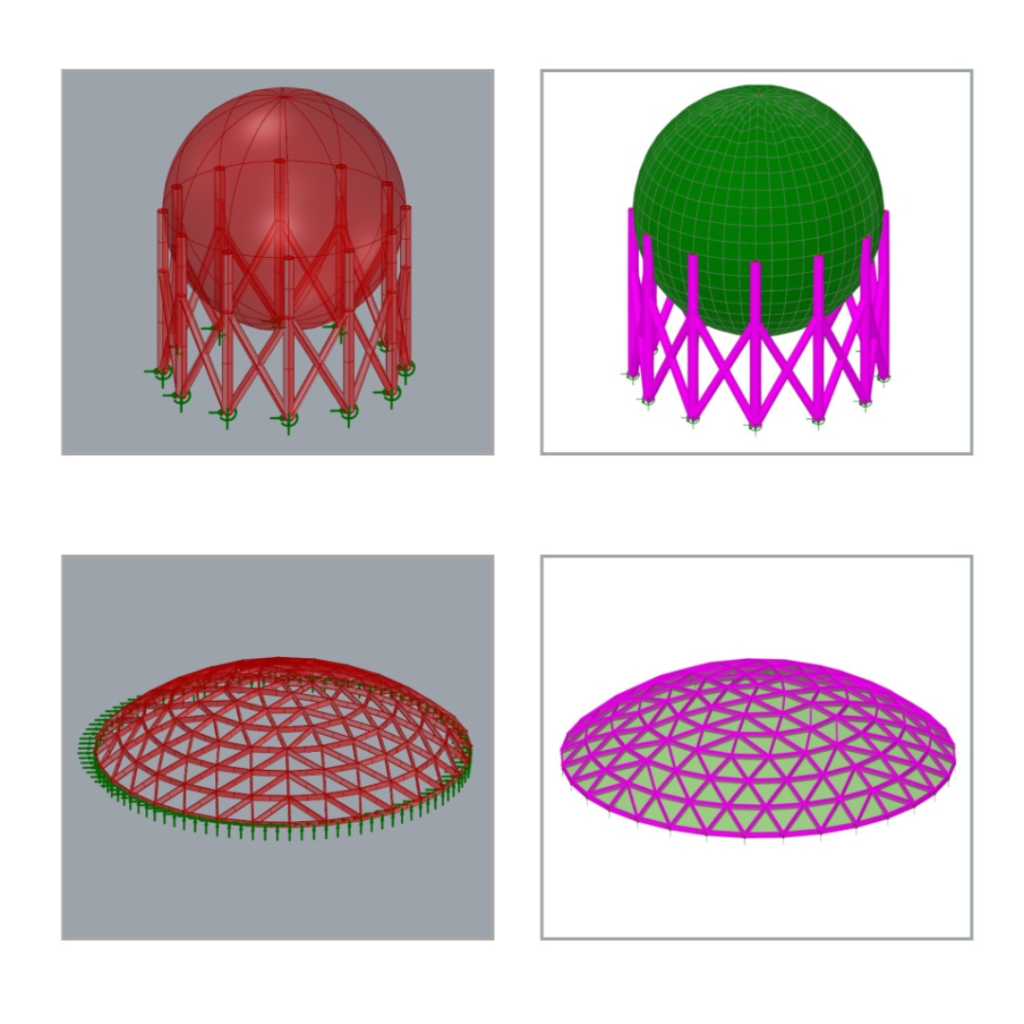
You can find more info on the website
3.23. Swallow in Grasshopper

Swallow bridges the gap between Grasshopper and structural analysis tools like ETABS and SAP2000.
With it, you can:
- Define structural attributes like story heights, sections, loads, and constraints.
- Bind these attributes to geometry in Grasshopper.
- Automatically assemble and export a full analysis model via ETABS or SAP2000’s API.
Swallow works with Rhino 6 SR19+ (including Rhino 7), and supports SAP2000 v23 and ETABS v19.

To learn more click HERE
3.24. Kudu in Grasshopper

Kudu is a Grasshopper component library that gives you direct access to the CSi API, enabling control of SAP2000, ETABS, and SAFE—all from within Grasshopper.
Use it to:
- Automate structural workflows
- Control model creation, loading, and analysis
- Integrate CSi software into parametric design processes
A powerful tool for advanced users looking to bring full CSi functionality into Grasshopper environments.
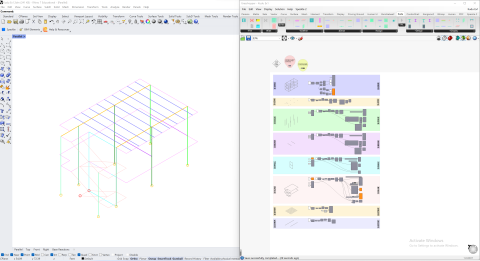
For more check out the website LINK
Write an email at [email protected]
And I will add it to a list !!
Check out my other articles about Grasshopper
Grasshopper with visualisation software
BIM in Grasshopper – The ultimate software list
Grasshopper Data Tree – Path Mapper is a BADASS
If you want to get more information about Grasshopper and learn parametric modelling, download the free guide – FREE DOWNLOAD
Grasshopper is a plugin to Rhino that you can download HERE








